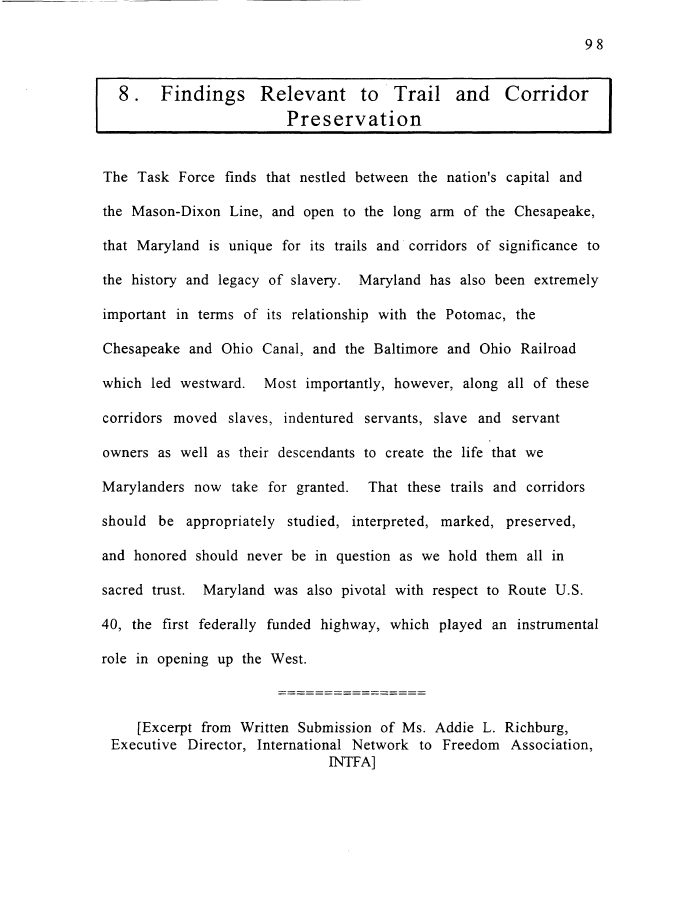 |
||||
|
TASK FORCE TO STUDY THE HISTORY AND LEGACY OF SLAVERY IN MARYLAND (Final Report) 1999/12/31 MdHR 991422 MdHR 991422, Image No: 107 Print image (38K) |
 |
||||
|
TASK FORCE TO STUDY THE HISTORY AND LEGACY OF SLAVERY IN MARYLAND (Final Report) 1999/12/31 MdHR 991422 MdHR 991422, Image No: 107 Print image (38K) |
| 98 8. Findings Relevant to Trail and Corridor Preservation The Task Force finds that nestled between the nation's capital and the Mason-Dixon Line, and open to the long arm of the Chesapeake, that Maryland is unique for its trails and corridors of significance to the history and legacy of slavery. Maryland has also been extremely important in terms of its relationship with the Potomac, the Chesapeake and Ohio Canal, and the Baltimore and Ohio Railroad which led westward. Most importantly, however, along all of these corridors moved slaves, indentured servants, slave and servant owners as well as their descendants to create the life that we Marylanders now take for granted. That these trails and corridors should be appropriately studied, interpreted, marked, preserved, and honored should never be in question as we hold them all in sacred trust. Maryland was also pivotal with respect to Route U.S. 40, the first federally funded highway, which played an instrumental role in opening up the West. [Excerpt from Written Submission of Ms. Addie L. Richburg, Executive Director, International Network to Freedom Association, INTFA] |